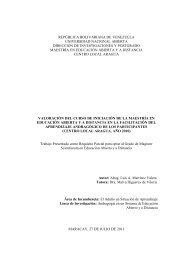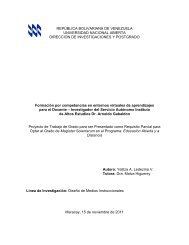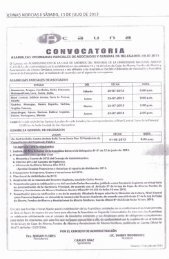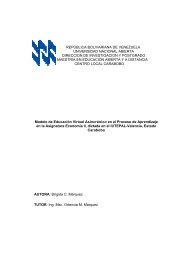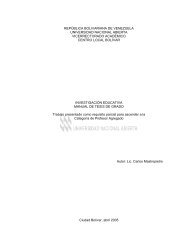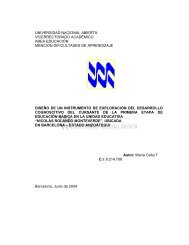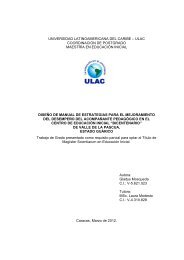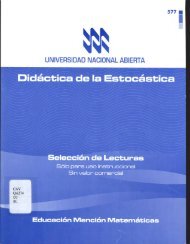Ecuaciones Integrales Lineales de Volterra-Dushnik en Espacios de ...
Ecuaciones Integrales Lineales de Volterra-Dushnik en Espacios de ...
Ecuaciones Integrales Lineales de Volterra-Dushnik en Espacios de ...
Create successful ePaper yourself
Turn your PDF publications into a flip-book with our unique Google optimized e-Paper software.
Capítulo 4. Algunas aplicaciones <strong>de</strong> la ecuación integral lineal <strong>de</strong> <strong>Volterra</strong>-<strong>Dushnik</strong> 106Así, para el fijado ǫ > 0 y δ > 0 tal que 0 < |t + h − t| = |h| = h < δ, resulta∥ 1 ∫(T(s)x − T(t)x)ds∥ ≤ 1 ∫‖T(s)x − T(t)x‖ds < ǫ.hh[t,t+h]1En consecu<strong>en</strong>cia, límh→0 + h∫[t,t+h][t,t+h]T(s)xds = T(t)x.Por otro lado, <strong>de</strong> (4.24) y la Afirmación 1,∫A T(s)xds = T(t)x − x.[0,t]Ahora, sean t ≥ 0, x ∈ D(A) y h > 0. Entonces, las funciones[T(h)x − x][0, t] ∋ s ↦→ T(s)hconverg<strong>en</strong> uniformem<strong>en</strong>te a la función [0, t] ∋ s ↦→ T(s)Ax ∈ X, cuando h → 0 + . Así,∈ X[T(h) − I]límh→0 + h∫[0,t]∫T(s)xds = límh→0 +=∫[0,t]T(s)T(s)Axds,[T(h) − I]xdsh[0,t]<strong>de</strong> don<strong>de</strong>,∫AT(s)xds =∫T(s)Axds = T(x) − x.[0,t][0,t]□Con ayuda <strong>de</strong> este Teorema 4.2.3 <strong>de</strong>mostremos que el g<strong>en</strong>erador infinitesimal, introducido<strong>en</strong> la Definición 4.2.3, aunque <strong>en</strong> g<strong>en</strong>eral no es acotado, ti<strong>en</strong>e otras propieda<strong>de</strong>s:{ }Teorema 4.2.4 Sea T(t) un semigrupo fuertem<strong>en</strong>te continuo sobre un espacio <strong>de</strong>t≥0Banach X con g<strong>en</strong>erador infinitesimal A. Entonces,i) D(A) es <strong>de</strong>nso <strong>en</strong> X.ii) A es un operador lineal cerrado.





